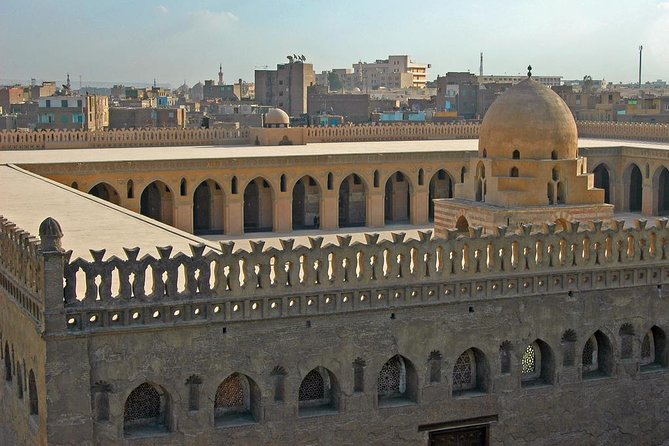A monument of brilliant red brick and lace-like ornaments, the Mosque of Ibn Tūlūn is an homage to bygone centuries. Crisp air whistles through the complex, and imagination is reborn in time-etched crevices; a murmur of prayers, a loose calling of Allah is Greater, and an image of the ninth century develops in the mind. Commissioned in 876 AD by Ahmed Ibn Tūlūn, the then-governor of Egypt and Syria, the mosque sits in present-day Cairo, flanked by three ziyādahs: courtyards that separated the religious structure from secular settlements. The architecture draws on Abbāsid sensibilities, with crenelated outside walls and carved stucco patterns framing the outer arches and foliated designs throughout. The minaret, a striking composition of three floors, features a different shape for each (squared, spiral, and octagonal). Ibn Tūlūn ordered the mosque’s construction soon after assuming office and conquering Syria; he used it as a way to assert his independence from the Abbāsid Caliphate. Situated on Jebal Yashkur, the mosque was intended to “serve as the main congregational mosque of Ibn Tūlūn’s new administrative capital, al-Qata’i.” Described as a man who “knew what he wanted and carried out his…



